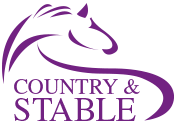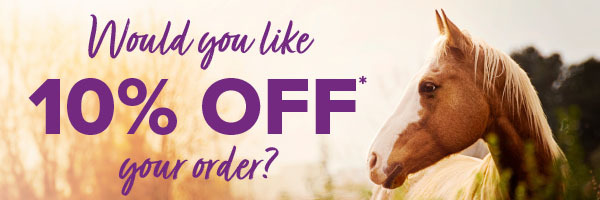What does a fly mask do, and does my horse need one?
May 13th 2020
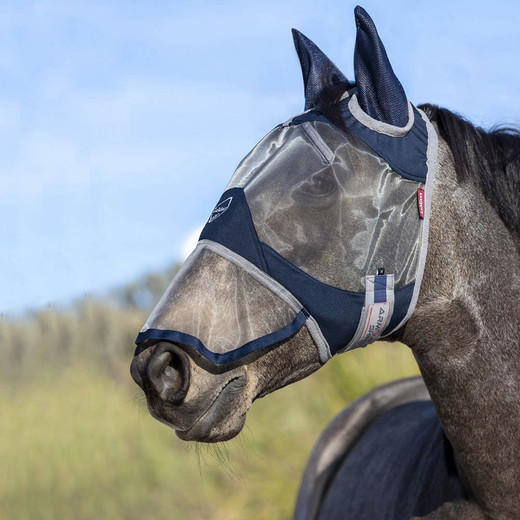
If you’re new to the world of equestrian and horse riding, then you may have heard people talking about fly masks, or seen them mentioned online, but do you know what they’re actually for? What does a fly mask do, and does my horse need one?
This article is going to tell you everything you need to know about fly masks. Meaning you’re better informed and can decide whether you need to purchase one for your horse.
What does a fly mask do?
Well the clue is in the name really! A fly mask helps protect your horse’s face, eyes, and ears from flies and other insects. There are all sorts of bugs that can irritate your horse. The skin around the face is often more sensitive and it can cause real issues. Some horses are also particularly sensitive to sunlight, and fly masks can help protect their skin and eyes. Some fly masks are made with UV protection for extra defence.
Fly masks do look a little odd, but if they are fitted correctly shouldn’t cause the horse any problems. And if you are wondering, can horses see through fly masks? – of course, they can! They’re made of fine mesh, so the horse’s vision is barely affected at all.
Why use a fly mask?
An extremely good reason to use a fly mask is to ensure your horse is as comfortable and free from irritation as possible. As humans, we can swat insects away from our faces with our hands, but obviously, horses don’t have that luxury, and can therefore become very distressed. When in herds, horses usually use their tail to swish away flies from each other’s faces. If your horse is turned out by itself, they do not have this option so therefore require intervention from us.
Insects can also cause infection and allergies, so a fly mask can really help you manage your horse’s health. For example, face flies are attracted to the moisture around the eyes, which can lead to infections. While on the other hand, gnats can get into the ears or mouth and their bites can cause a lot of discomfort. Fly masks can also benefit horses suffering from aural plaques. You can use fly repellent to keep flies away from the rest of the horse’s body. However, it is not as easy to spray it around the mouth and eyes.
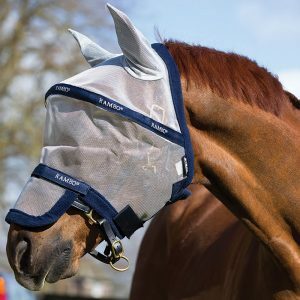
How to size a fly mask
Making sure your horse’s fly mask fits properly is essential, or it could end up being even more of an irritant. The chart below provides a guide to sizing a fly mask, although you should always double-check your horse’s measurements.
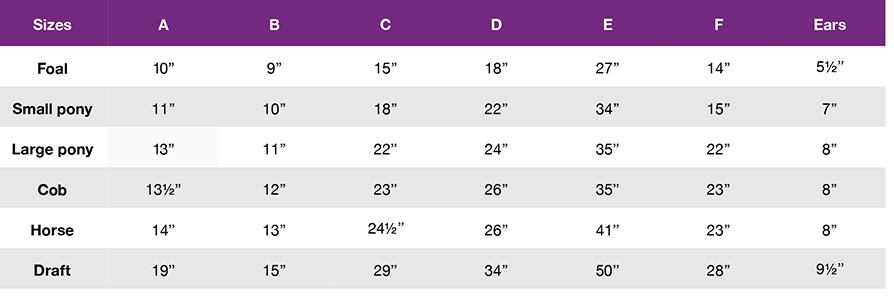
A = Between ears to middle of face
B = Bottom side of ear to middle of face
C = Between ears to between nostrils down centre of face
D = Around middle of face to middle of jowl
E = Around the neck 2” behind ears at mid jowl
F = Side to side across brow 2” behind & below ears
How to fit a fly mask
There are a few considerations to make when sizing and fitting a fly mask to ensure it fits properly. The edging of the mask doesn’t need to be clamped tight against the skin all the way around, or it will cause rubbing and chafing. However, you do need to make sure there aren’t any large gaps. Most masks have fleece edging to make it softer and more secure. You should also make sure it’s not too tight around the throatlatch. There should be enough room between the mesh and the horse’s skin. If the mask is too close to the eyes, it can scratch them and cause corneal ulcers. So ensure it is well-clearing the eyelashes.
A horse’s ears are always moving, so if you have a fly mask with ears, then ensure there’s room for them to move their ears freely or they may become irritated and distressed. If your horse has not worn a fly mask before we recommend you introduce the fly mask to the horse gradually in a controlled environment to ensure the horse is happy and content.
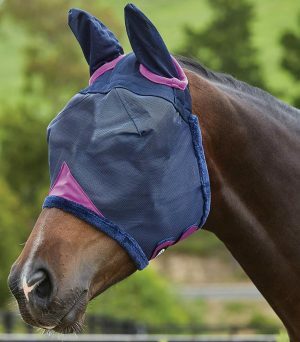
Fly mask with or without ears
Whether you choose a fly mask with or without ears comes down to how much your horse is affected by insects in its ears – some are particularly irritated by it, others not so much. Your horse may find gnats or other flies more of a problem if their ears are clipped for showing, in which case a fly mask may well be worth it. If you do choose a fly mask with ears, leave enough room for your horse to move their ears freely.
It’s also not uncommon for riders to use fly hoods that protect the ears and top of the head. If you’re training or competing in dressage, eventing or any other discipline, then flies can distract your horse, making it more likely to ignore your instructions. These are popular in shows as they can actually look quite smart and along with aiding concentration, they can also assist in muffling crowd noise.
How to clean a fly mask
You should clean your horse’s fly mask regularly, even daily if they’ve been very active. Dirt, mud and other debris will get kicked up and caught in the mask, which could lead to irritation. General grime will also likely build up on the inside of the mask from breathing and sweating, and if you don’t clean this then it could cause infections. You should use some kind of antibacterial agent such as a mild disinfectant solution to kill off bacteria, and then rinse thoroughly in clean water before air drying.
It’s always wise to have at least one spare fly mask, so you can put on a clean one while the other is being washed.
See our full range of fly masks for horses and keep your horse’s eyes and ears fly free! Need a fly repellent?
